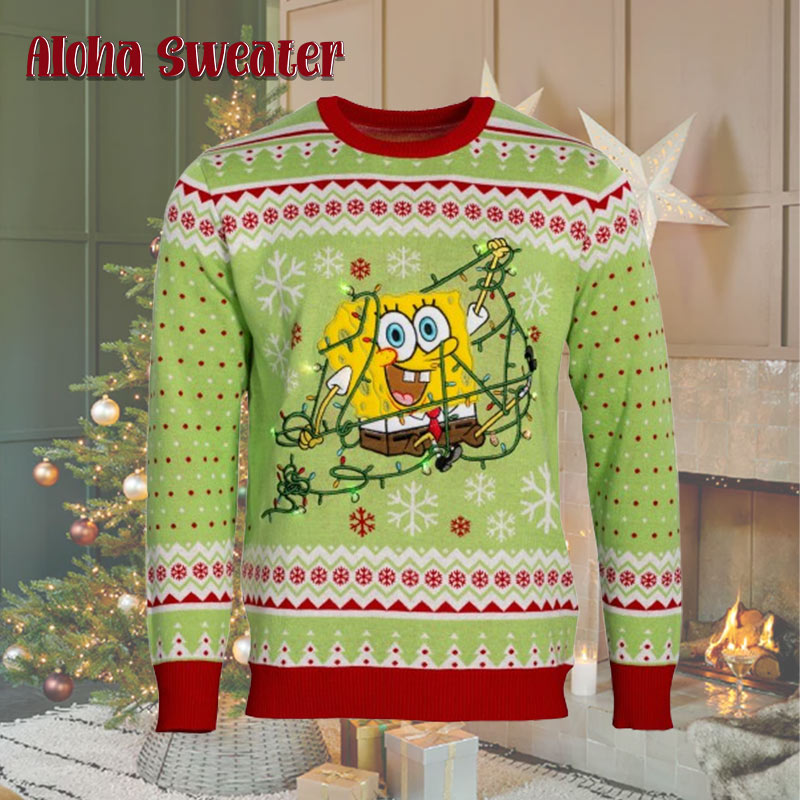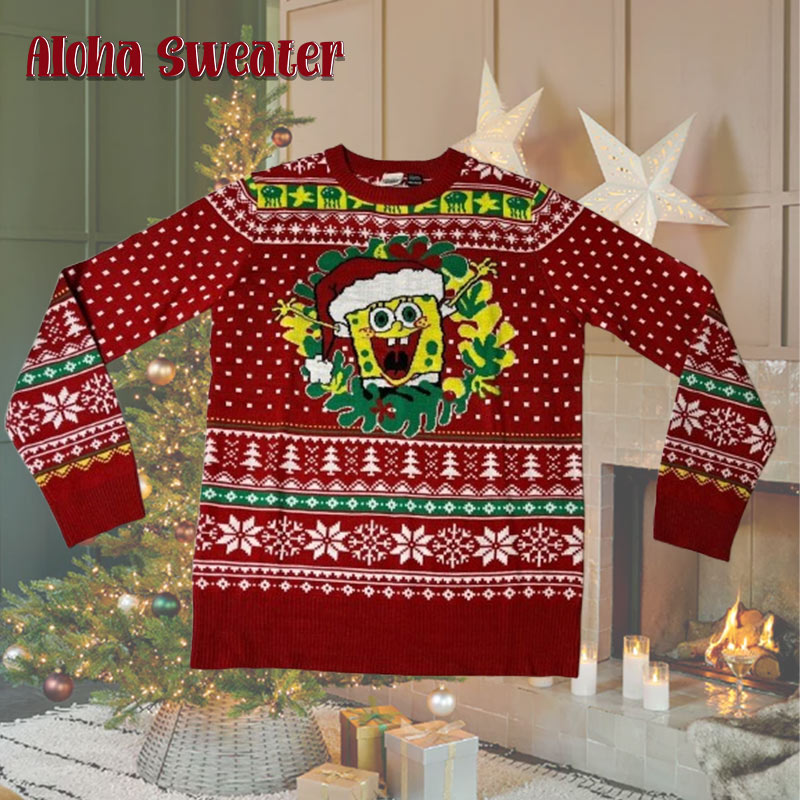Blog
Why the Ugly Sweater Became a Modern Christmas Icon
The ugly Christmas sweater is everywhere. It’s on greeting cards, office dress codes, runways, and in family photos. What once seemed like a fashion joke is now a holiday tradition. It has moved beyond novelty. In some ways, it has become a symbol of Christmas itself.

But how did this happen? What led a loud, odd piece of clothing to represent one of the most meaningful holidays of the year?
This article explores the reasons why the ugly sweater rose from mockery to icon. We’ll look at the history, the humor, the culture, and the human need behind this modern tradition.
1. It’s a Shared Joke That Everyone Understands
The first reason the ugly sweater has stayed with us is simple: it’s funny. And not just in a random way. It’s funny in a way that brings people together.
Christmas, for many, is a time of joy. But it also comes with pressure. Perfect gifts. Perfect dinners. Perfect decorations. The ugly sweater does the opposite. It embraces the mess. It laughs at the effort.
When someone wears an ugly sweater, they’re saying, “Let’s not take this too seriously.” It opens the door to laughter, which helps people relax. Humor becomes the glue in holiday gatherings. Everyone can point at the blinking snowman or the misshapen reindeer and smile. The sweater acts like a shortcut to shared connection.
And unlike more subtle jokes, the ugly sweater is visual. You don’t need context. You don’t need a punchline. The sweater is the joke. That makes it universal.
2. It Balances Irony and Sincerity
Ugly sweaters started as sincere clothing. Early holiday knits from the 1950s and 1960s were made with care. They used warm yarns and festive patterns. At first, people wore them with pride.
Over time, though, fashion changed. These sweaters began to look outdated. They became easy targets for humor. That’s when irony took over. Wearing one became a wink—a way to say, “Yes, I know this looks bad.”
But over time, that irony softened. What began as mockery turned into tradition. People no longer wear ugly sweaters just to be sarcastic. Some still do. But others wear them with real affection. They find comfort in them.
This mix of irony and sincerity makes the tradition feel modern. It allows people to enjoy old things without needing to pretend they’re cool. The ugly sweater becomes a space where both humor and heart can live.
3. It Gives People a Way to Participate—Without Pressure
Not everyone loves Christmas. For some, it’s stressful. For others, it’s lonely. But wearing an ugly sweater is an easy way to take part.
It doesn’t ask much. You don’t need to host a dinner, decorate a tree, or sing carols. You just need to pull on a sweater. That’s enough to join the celebration.
It works across all kinds of settings. Introverts, extroverts, kids, and seniors can all wear one. You don’t have to explain why. It doesn’t cost much. You don’t have to match anyone’s mood.
In a time when many holiday customs are formal or expensive, the ugly sweater offers a low-pressure way in. It’s accessible. It’s flexible. It works in an office, a school, a bar, or a living room. That’s part of why it lasts.

4. It Bridges Generations
Most holiday symbols come from the past. Christmas trees, carols, candles—they all have deep roots. The ugly sweater is different. It feels old and new at the same time.
Grandparents remember when these sweaters were worn with care. Parents remember when they became funny. Younger people see them as tradition. Each generation sees something slightly different—but they can all agree to wear one.
That shared ground matters. Holidays are about families and connections. When you put on the same kind of sweater as your cousin, your uncle, or your child, you feel part of something. Even if the sweaters are tacky.
The ugly sweater doesn’t belong to one age group. It belongs to the moment. It fits both nostalgia and now. That’s rare.
5. It Works in Photos—and Photos Shape Culture
Christmas today lives partly online. People post photos of their trees, meals, and gifts. Ugly sweaters fit perfectly into that world.
They stand out in pictures. They’re colorful. They’re weird. They add personality. A group photo with ten people in matching elf sweaters? That’s an instant memory—and a viral post.
In short: they photograph well. That gives them power.
As more people share these photos, more people want to join the fun. The sweater spreads through screens as well as closets. It becomes part of how we see Christmas, not just how we experience it.
That makes it more than a trend. It becomes part of the visual language of the season.
6. Retailers Embraced the Trend—and Helped Cement It
Let’s not forget the role of business.
Once ugly sweaters started to catch on, clothing brands jumped in. They moved from vintage racks to mainstream shelves. Soon, every big box store had a section for them. That meant more people could buy them—and more people saw them in public.
Mass production gave the sweater variety. You could get one with cats, tacos, memes, or political jokes. There was something for everyone. Supply fed demand. Demand fed culture.
Eventually, designers joined too. What started as kitsch ended up on runways. Fashion borrowed the joke and gave it polish. Now, there are $10 sweaters and $500 ones. The ugly sweater, ironically, became part of the fashion world.
When culture and commerce work together, symbols tend to stick.
7. It Brings Lightness to a Heavy Season
Many people love Christmas. But it can also be hard.
Some deal with grief. Others face loneliness. Some feel financial strain. Some dread family tension. The season is rich, but it’s not simple.
The ugly sweater brings something rare: pure lightness.
It doesn’t carry deep religious meaning. It doesn’t ask for money or effort. It doesn’t tell you what to believe. It just asks you to laugh—and maybe share that laugh with someone else.
That’s a valuable thing.
The sweater doesn’t try to fix sadness. But it gives people a break. In the middle of long to-do lists and deep emotions, it gives you something small and silly to enjoy.
That might be the most important reason it stays with us.
8. It’s Now a Cultural Marker
Today, the ugly sweater isn’t just clothing. It’s a signal. It tells people: I know what time of year it is. I know the rules of the season. And I’m here for it.
Just like pumpkins in October or red envelopes at Lunar New Year, the ugly sweater marks a specific moment in culture. It sets a tone. It helps shape a mood.
Some symbols get handed down through centuries. Others are built in a few decades. The ugly sweater belongs to the second group—but that doesn’t make it less real.
It marks Christmas in a way people understand. That’s enough to make it iconic.
Final Thoughts
The rise of the ugly Christmas sweater isn’t random. It fills real gaps. It speaks to real needs. It helps people laugh, connect, and belong—all with one simple item of clothing.
It’s not about beauty. It’s not about trends. It’s not even about warmth. It’s about feeling human during a busy, complicated season.
So if you pull on a sweater with bells, tinsel, or a grumpy Santa, know this: you’re not just dressing up. You’re joining a tradition that’s still growing—one knit stitch at a time.
And yes—it’s okay if it looks a little ridiculous.
